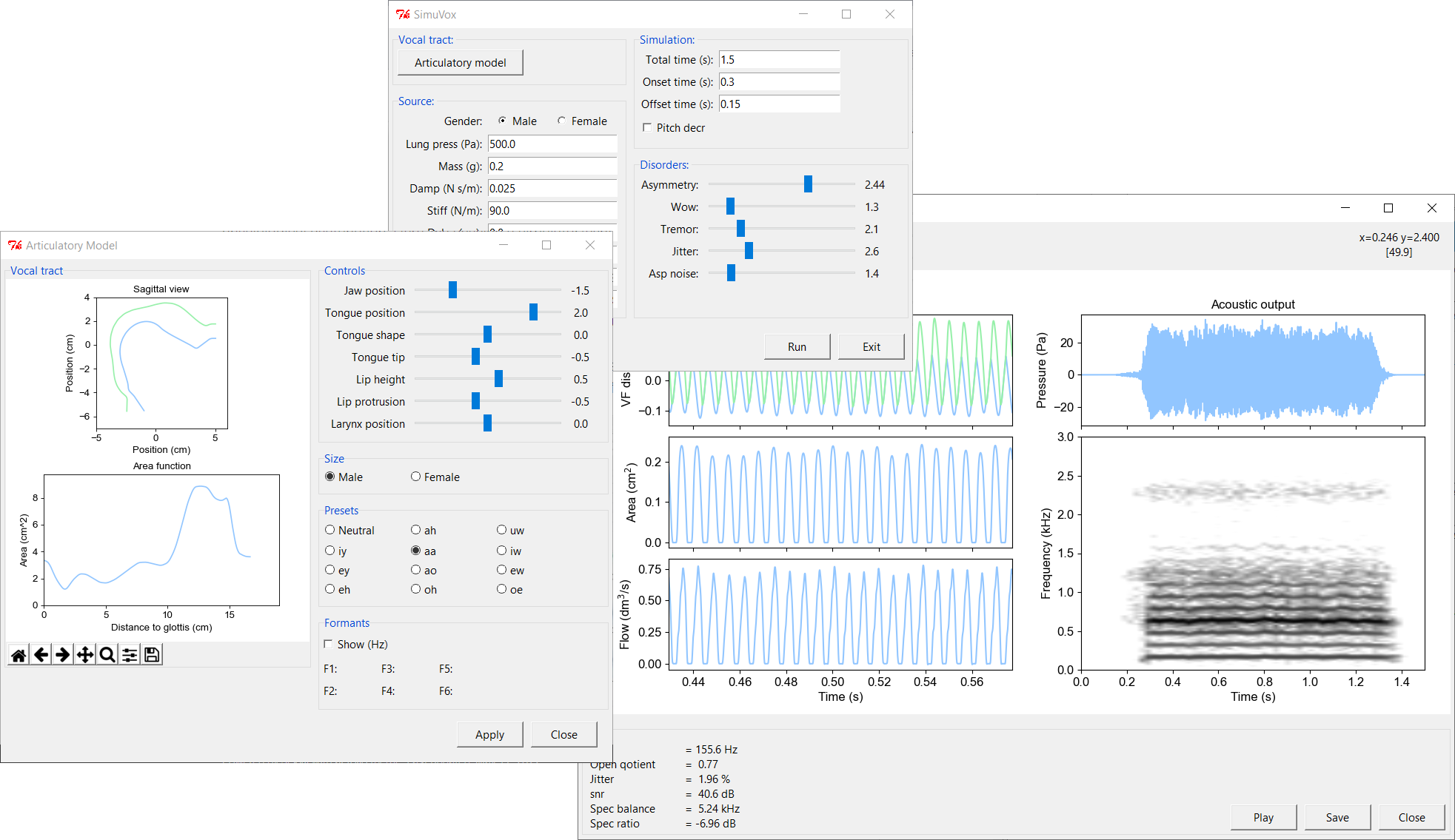SimuVox
Free physics-based software for simulating normal and disordered voice quality
Overview
SimuVox is a physics-based speech synthesis software designed for clinical assessment of voice disorders. This free tool enables clinicians, researchers, and educators to simulate and study abnormal voices with irregular pitch, loudness, or timbre that often stem from laryngeal pathologies or physiological dysfunctions.
Unlike traditional voice synthesis methods, SimuVox uses biomechanical and aerodynamic models to create realistic voice simulations, allowing direct control through physiological parameters rather than abstract signal processing parameters.
Key Features
- Vocal Fold Modeling: low-dimensional model with support for asymmetric left/right tissue properties
- Glottal Aerodynamics: Simulation of airflow through the glottis based on fluid dynamics principles
- Acoustic Wave Propagation: Models sound transmission through the vocal tract, trachea, bronchi, nasal tract, and paranasal sinuses
- Disorder Simulation: Capability to simulate various voice pathologies including muscle jitter, tremor, and aspiration noise
- Articulatory Control: Configurable parameters for jaw, tongue, lips, and larynx position
- Physiological Parameters: Direct control through clinically meaningful parameters
Download, version 0.1.2, July 2023.
Audio:

Clinical Applications
SimuVox has multiple applications in clinical voice assessment and research:
- Research Tool: Investigating relationships between signal properties and laryngeal conditions causing abnormal voice quality
- Perceptual Assessment: Providing controllable synthetic voice stimuli for training and calibrating perceptual evaluations
- Clinical Training: Computational training tool for speech-language pathologists and voice specialists
- Diagnostic Support: Assisting in clinical diagnosis by modeling hypothetical pathological conditions
- Treatment Planning: Predicting voice outcomes for various therapeutic interventions
- Education: Teaching voice physiology and pathophysiology to students
Technical Details
The main mathematical models and implementation details are described in:
Lucero, Schoentgen & M Behlau, "Physics-based synthesis of disordered voices", Interspeech 2013 (Lyon, France, 2013) [PDF].
Awards and Recognition
SimuVox research has been recognized with awards from:
- Brazilian Society of Speech-Language Pathology and Audiology (2013, 2015, 2016, 2020)
- Brazilian Chapter of The Voice Foundation (2017, 2021)
Support and Funding
This project was supported by:
- CNPq-FRS/FNRS Brazil-Belgium cooperation program with Jean Schoentgen at Université Libre de Bruxelles (2012-2014)
- CNPq grant (2015-2018) in collaboration with Mara Behlau's team at the Center of Voice Studies of São Paulo
Related Projects
For web-based voice analysis (rather than synthesis), see PhonaLab - a free online tool for acoustic voice analysis with AI-powered clinical interpretation.
Citation
If you use SimuVox in your research, please cite:
Lucero, J.C., Schoentgen, J., & Behlau, M. (2013). Physics-based synthesis of disordered voices. In Proceedings of Interspeech 2013, Lyon, France.